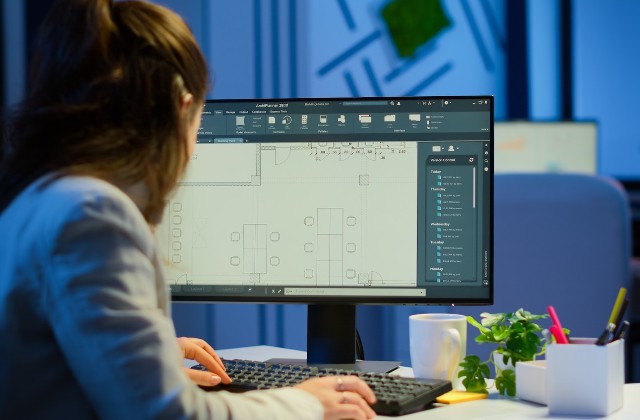Computer-Aided Design (CAD) has transformed how designers and engineers perceive their ideas. CAD drawing is a toolset that unlocks creativity and enhances the design process, ranging from architectural blueprints to product prototypes. The article delves into the advantages of CAD drawing in different sectors and how it encourages creativity by enabling designers to transform their concepts into a digital realm.
Understanding CAD Drawing
A CAD drawing is a virtual depiction of tangible items or constructions made with specialized software. Designers can use it to create precise and intricate 2D and 3D models that are easy to manipulate, analyze, and modify. In contrast to traditional hand-drawn sketches, CAD drawings provide precision and scalability, allowing designers to craft intricate designs with the highest level of accuracy.
Streamlining the Design Process
CAD drawing has a significant advantage in streamlining the design process. Starting from idea creation to the ultimate product realization, CAD drawing services provide an organized and repetitive method that lessens the time and energy needed to generate designs. Designers have the ability to swiftly test out various concepts, implement changes in real time, and obtain immediate feedback. This enables quicker decision-making and refinement of designs.
Enhancing Collaboration
The use of CAD drawings allows team members and stakeholders to collaborate easily, even if they are in different places. Several designers can collaborate on a project simultaneously, exchanging their thoughts and incorporating feedback instantly. Collaboration at this level not just boosts productivity but also nurtures a creative atmosphere where different viewpoints contribute to the development of designs.
Designing for Efficiency and Optimization
CAD drawing enables designers to generate practical and streamlined designs. By utilizing simulation and analysis tools, designers can evaluate their ideas across various scenarios, detect possible shortcomings, and enhance designs to achieve optimal efficiency and performance. The likelihood of costly errors is reduced, and design improvement is allowed before physical prototyping or construction begins with this iterative approach.
Leveraging Parametric Modeling
Advanced CAD software includes a crucial feature called parametric modeling, which empowers designers to establish dynamic connections among various elements within a model. By specifying a particular parameter, like the beam’s length, all interconnected components automatically adapt accordingly. Using a parametric approach, the design maintains consistency and allows easy adjustments in response to changing project requirements.
Applications of CAD Drawing in Various Industries
Architecture and Construction
CAD drawing has become essential for crafting intricate blueprints, vertical views, and three-dimensional representations in architecture. Architects can envision the appearance of a building before its construction, allowing them to make necessary alterations to the design and effectively convey their ideas to clients and contractors. CAD also allows for precise measurement and calculation, resulting in accurate material estimates and cost control throughout construction.
Industrial Design and Product Development
CAD drawing is very important in the design and development of products in the industry. Designers can generate virtual models of items, experiment with various versions, and evaluate their effectiveness. CAD helps companies decrease development expenses and shorten the time it takes to bring new products to the market. It also helps with quick prototyping and enables designers to create 3D-printed models for practical assessment.
Engineering and Manufacturing
CAD drawing is important in engineering and manufacturing as it helps create detailed mechanical designs and engineering drawings. Visualizing components in three dimensions improves comprehension of intricate assemblies and assists in the manufacturing procedure. Manufacturers can optimize their production workflows, minimize material wastage, and detect potential manufacturing issues in advance.
CAD Drawing and the Future of Creativity
The forthcoming direction of inventiveness resides in the fusion of CAD sketching alongside developing technologies. Augmented Reality (AR) and Virtual Reality (VR) are growing more common, allowing designers to immerse themselves in their creations. The merging of 3D CAD services and AR/VR allows for fresh opportunities in creative expression and allows designers to explore new frontiers of innovation.
Conclusion
The use of CAD drawing has completely transformed the way creative work is done, allowing designers and engineers to turn their concepts into reality with unmatched accuracy and effectiveness. CAD provides a range of tools for various fields like architecture and industrial design. It helps with collaboration, making the design process more efficient and encouraging innovation. Technology advancements will further elevate the importance of CAD drawing in shaping creativity’s future, opening up fresh opportunities for designers in different sectors.


